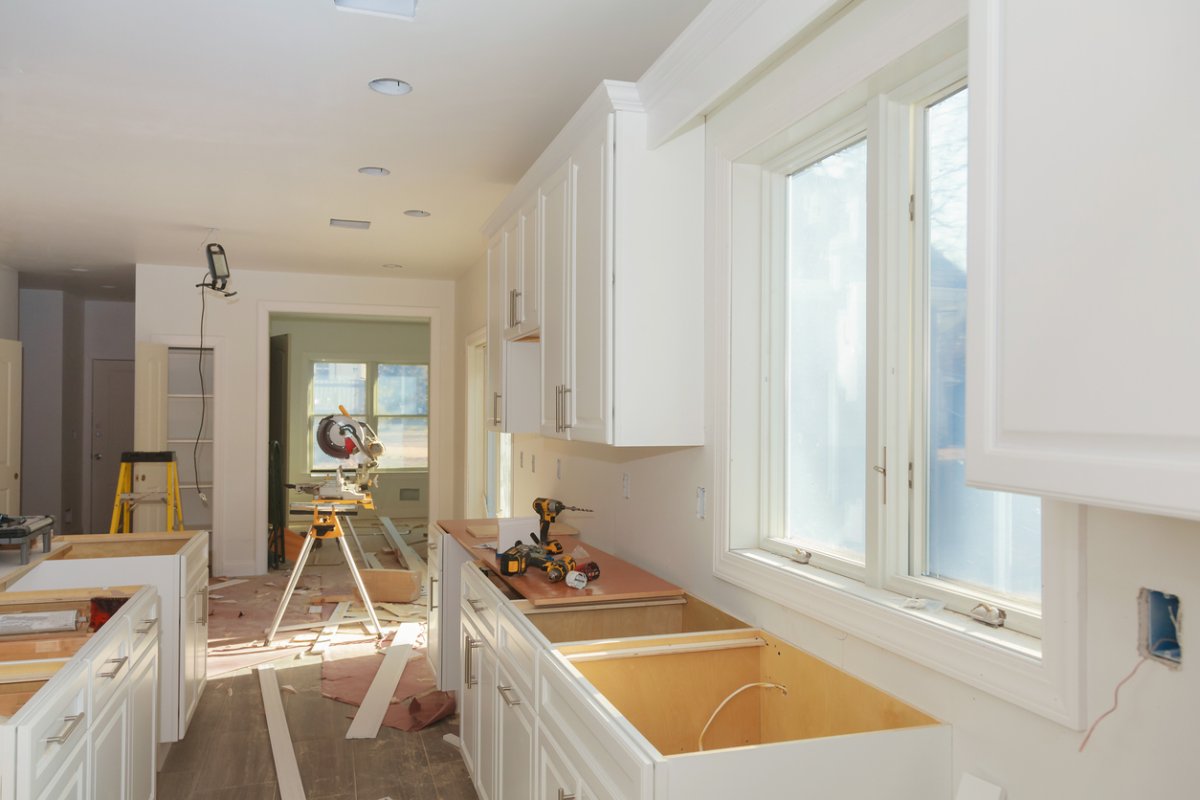We may earn revenue from the products available on this page and participate in affiliate programs. Learn More ›
Kitchen makeovers remain popular as homeowners continue to invest to create a warm, stylish, comfortable, and efficient heart of the home.
In addition to improved aesthetics and organization, kitchen remodels also hold reasonable resale value. According to Remodeling magazine’s 2011-2012 Cost vs. Value Report, midrange minor kitchen remodels—new countertops, appliances, cabinet fronts, and hardware—have an average national cost just shy of $20,000 and get 72% return on investment. Midrange major remodels, which include new appliances, cabinets, countertops, flooring, and lighting, have a mid-range average of $57,824 and a nearly 66% return. High-end renovations can easily cost $100,000 and up.
Planning Your Best Kitchen
Though aesthetics are important, the driving remodeling force is functionality. Start by doing some research and tour show houses and kitchen show rooms to see product up close and personal. Next, set a budget that reflects your main priorities for the new space and familiarize yourself with basic elements of design.
Today’s kitchens average 200–300 square feet and are increasingly part of an open-floor plan. Other trends include a move towards simplicity, uncluttered looks, energy efficiency, and natural materials.
Here are some key points to get you started:
How will you use the kitchen?
Before you do anything, determine how you like to cook and entertain in your kitchen. Do you cook alone or with someone? Is your kitchen a multi-purpose room where kids do homework and friends love to gather? Keep track of what currently works well and what doesn’t. For instance, if you’re forever crawling into the back of lower cabinets to retrieve something, jot that issue down.
Stop the clutter.
Now is your chance to take inventory of everything you need to store, then plan accordingly. Fortunately, cabinet makers realize storage and organization features drive sales, and they’ve responded accordingly.
Think about efficiency.
If your kitchen feels more like an obstacle course than an organized work place, consider two tried-and-true kitchen layout basics:
- The Work Triangle. This imaginary triangle features the stove, refrigerator, and sink at the points. The old “26-foot rule” dictates that the perimeter of this triangle should not exceed 26 feet and that each side should be between four and nine feet long. Make sure that the triangle doesn’t intersect an island or peninsula for more than a foot. (To see additional layouts, select Galley, L-shaped, Corridor, and G-shaped floor plans.)
- The Work Station. Create separate stations for food prep, cooking, baking, and cleaning. Each area is centered around a major appliance and needs at least 15 inches of counter space.
Build with Environmentally Friendly Materials
If you’re replacing or updating your décor, such as countertops, flooring and tile, look for sustainable materials like bamboo and cork, which come from plants that re-grow quickly from the same source (as opposed to wood; it takes decades to grow back a tree) or recycled content from companies like Green Building Supply.
Other renewable materials are also finding their way into cabinets. Kirei board, for example, is an engineered product using the stalks of sorghum plants, and bamboo is used in a laminated plywood. Reclaimed wood is also popular, she says.
“Re-using existing cabinetry is always preferred, especially if the cabinets are in good condition and pose no threat to the health of the people living in the home,” says Ashley Katz, communications manager for the U.S. Green Building Council based in Washington, DC. “Using salvaged cabinetry can be a way to reduce the impacts of manufacturing new goods, as well as reducing the amount of material entering landfills. While the variety of cabinetry materials once was sparse and limiting, now the choices for environmentally friendly cabinetry materials are endless, and we expect this trend to continue,” says Katz.
Use Energy-Efficient Appliances
When measuring the greenness of your kitchen, the first thing to look at is your appliances. “Outside of heating and cooling, the refrigerator is the main energy hog in the home,” says Jennifer Powers, media manager of the National Resources Defense Council of New York, NY. “The great thing about [today’s] refrigerators is that automatically, no matter what kind you have, it’s probably a good 70 percent more efficient than the old gold or green version from your childhood.”
With any appliance, you’ll want to look for the Energy Star Rating Number. The higher the energy rating number, the more efficient the appliance. Energy Star ranks appliance efficiency—any appliance with the Energy Star label is in the top 25 percent of energy performers.
Stick with a Budget
In all likelihood, you’ll need to make some choices on where to save and where to splurge. “Keep your priorities front and center,” advises the National Kitchen & Bath Association (NKBA). “A $500 range or a $10,000 one? A $100 sink or one that’s $3,500? A $4 polished brass knob or a $98 crystal model? What’s important to you?”
As for budget breakdown, the NKBA notes that you can expect:
- cabinetry and hardware to run about 29% of your investment
- appliances and ventilation can be 14%
- countertops typically run 10%
- installation is about 17% of the total project cost
Set aside 10% or 20% of your budget for contingencies.
Trust Your Judgement
There’s been a change in consumer attitude, marked by people following their own style sense, rather than the trends. “Consumers have become more assertive,” says Gin Guei Ebnesajjad, manager of product styling and development with Corian. They are smart and color-savvy, too, she says. As a result, their kitchens carry a creative punch that standard kitchens just can’t match.

